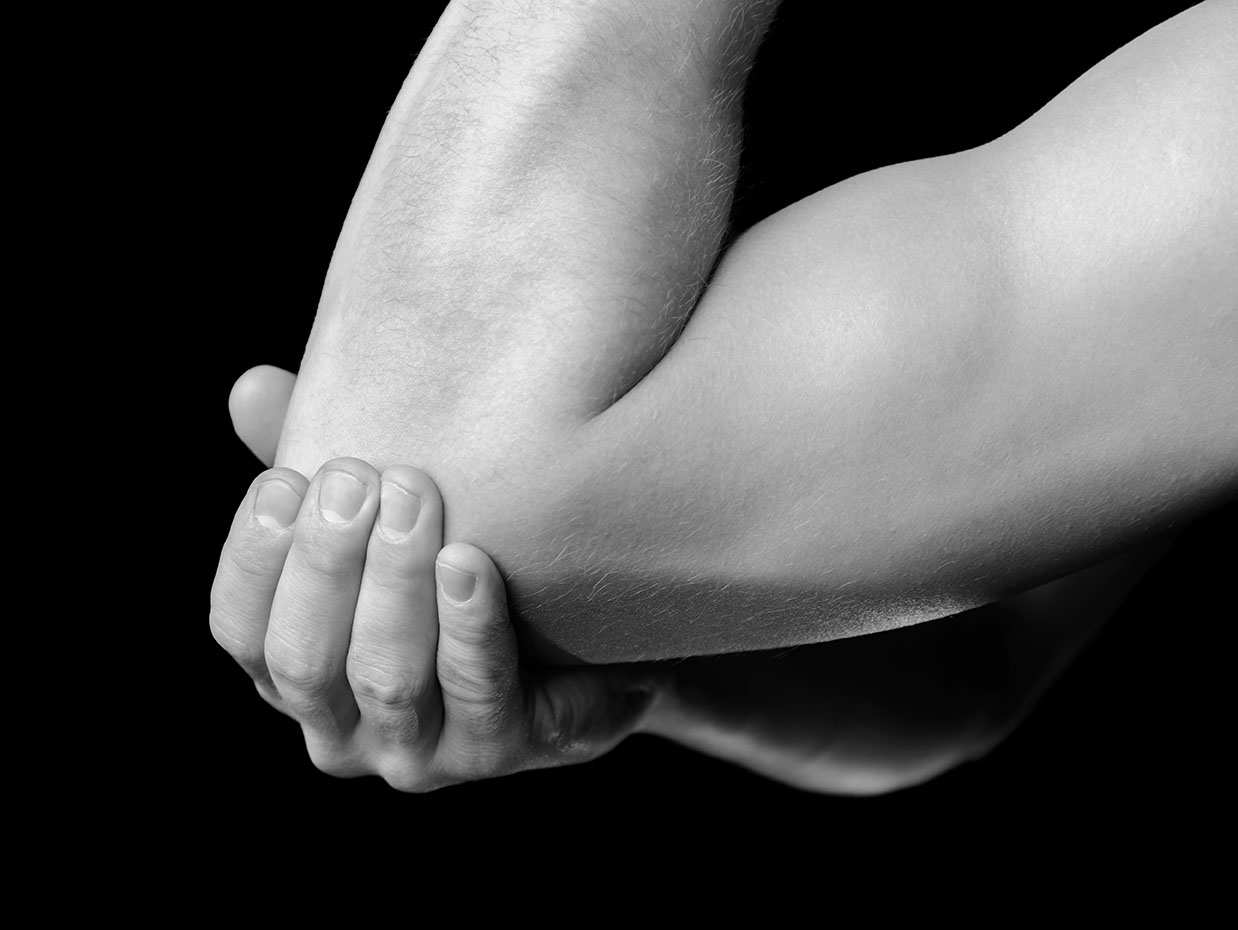Lateral Epicondylitis (Elbow Pain)
Lateral elbow pain is one of the most frequent non-traumatic elbow disorders. The most frequent diagnosis is lateral epicondylitis (LE), otherwise referred to as “tennis elbow”. LE is usually caused by the involvement of chronic degeneration of the wrist extensor muscles/tendon as they attach onto the lateral epicondyle of the elbow. There are a small group of forearm and wrist muscles that make up the common extensor tendon of the elbow, and of these muscles the most frequently affected is the extensor carpi radialis brevis. It is reported that repetitive activity may cause the tendon to become inflamed, leading to a tendinosis of the common extensor tendon, which is a progressive degenerative process of the tendon. The picture below demonstrates the injured muscle/tendon fibres involved in lateral epicondylitis. 
How does it all begin?
Tendons stretch easily in response to gradually increasing forces. However, if the stress exceeds the tendon’s capacity to stretching, a small tear called a micro-tear will occur. These micro-tears can multiply and grow over time accelerating the degenerative process, often causing weakening, underuse, weakening at the tendon-bone junction, and poor blood supply (Ahmad et al. 2013).
What are the signs?
It usually starts off with some localized pain, near the lateral aspect of the elbow, radiating down the side of the elbow and outside of the forearm. It can vary between intensity depending on activity, and often is bothersome at sleep (Vaquero-Picado 2016) . It often accompanies with point tender pain, weakness, pain increase with various elbow motions, bony prominences can form along the lateral elbow, and can present with reduced muscle tone and skin turgor. There is no bruising, redness or hotness to the local tissue, and should be revaluated if seen. It is important to also consider other areas of the body that can contribute to elbow pain such as: injuries to the neck that may increase your elbow pain, overuse injuries that are making you use your elbow more (ie, shoulder injury), nerve entrapment, and degenerative disease of bone and cartilage.Shoulder Complex Injuries in Hockey
Recommended Treatment Options
Rehabilitative therapies such as stretching, strengthening, eccentric loading exercises are favorable, as well as activity modifications (Vaquero-Picado 2016). Neuromuscular stabilization techniques of the shoulder, scapula is also important to add to accelerated exercise programing.
Acupuncture has demonstrated very strong evidence in the outcome on short-term treatment and effectiveness (Trinh et al. 2004).
There is some evidence on the short-term use of an elbow strap/brace to reduce pain associated with the tension on the wrist extensor muscles, however, prolonged use is highly cautioned against.
Speaking with your family doctor about alternative to conservative management, that include: corticosteroid injections, PRP injections, medication use.
Most patient’s symptoms resolve with conservative management including manual therapy, activity modifications and exercise. Remember, always try to start your treatment early.

Dr. Nourus Yacoub, DC
Medical Director and Chiropractor
Royal Chiropractic and Sports Injury Clinic
References
Ahmad Z, Siddiqui N, Malik SS, et al. Lateral epicondylitis: a of pathology and management. Bone Joint Journal. 2013; 95-B:1158-1164.
Trinh KV, Phillips S-D, Ho E, Damsma K. Acupuncture for the alleviation of lateral epicondyle pain: a systematic review. Rheumatology (Oxford) 2004;43:1085-1090.
Vaquero-Picado, A., Barco, R. and Antuña, SA. Lateral epicondylitis of the elbow. EFORT Open Rev. 2016 Nov; 1(11): 391–397.




 Every elite athlete knows that an effective warm-up is an important tool in preventing injury and improving performance. I would like to introduce to you the importance of a warm up, why it is important to have both a static and dynamic component to warm ups and briefly touch on today’s research.
Every elite athlete knows that an effective warm-up is an important tool in preventing injury and improving performance. I would like to introduce to you the importance of a warm up, why it is important to have both a static and dynamic component to warm ups and briefly touch on today’s research.